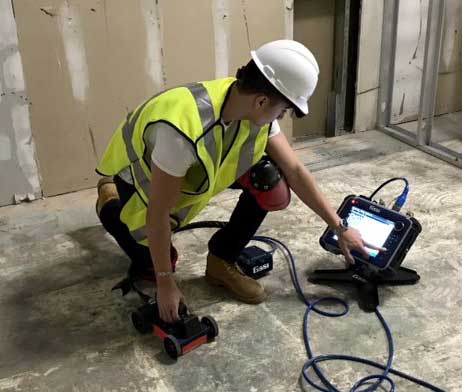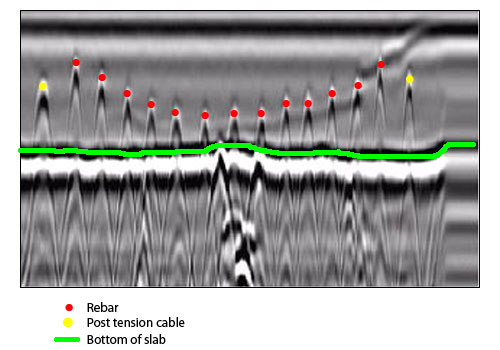The Advantages of RainierGPR Concrete Scanning for Construction Projects
The Advantages of RainierGPR Concrete Scanning for Construction Projects
Blog Article
The Relevance of Exact Concrete Scanning in Detecting Underground Hazards
The capability to accurately find and map these below ground risks is not merely a matter of comfort however an important element of ensuring the safety of both building employees and the integrity of the job itself. By deploying sophisticated scanning technologies and methods, experts can discover surprise threats, stop costly damages, and eventually lead the method for smoother and much safer building and construction endeavors.
Advanced Scanning Technologies for Discovery
Advanced radar systems are revolutionizing the area of below ground discovery by providing unmatched precision and effectiveness. These innovative scanning modern technologies make use of ground-penetrating radar (GPR) to produce in-depth photos of subsurface structures, offering insights right into what exists beneath the surface area with exceptional clearness. By releasing high-frequency pulses into the ground and gauging the representations, radar systems can determine variations in product composition and identify underground threats such as pipes, spaces, and cords.
One of the essential benefits of these advanced radar systems is their non-invasive nature, enabling comprehensive assessments without triggering damages to the existing structures. This not just makes sure the safety and security of the surrounding setting yet additionally minimizes the demand for costly repair services or disruptions to continuous building tasks. Furthermore, the real-time information supplied by these scanning innovations enables quick decision-making and enhances total job efficiency.
Relevance of Subsurface Mapping

Precise subsurface mapping assists in preventing pricey damages to existing underground facilities, minimizing the risk of mishaps, and keeping job timelines. It makes it possible for project supervisors to make informed choices concerning website planning, tools release, and source allotment. Additionally, subsurface mapping enables far better control amongst different groups dealing with a task and aids in adhering to regulative requirements connected to below ground energy discovery.
Mitigating Threats in Construction Tasks
Reliable risk reduction approaches are essential for guaranteeing the success and safety of construction jobs. Identifying and addressing prospective dangers prior to they intensify is important in maintaining task timelines, budget plans, and general quality. One essential facet of mitigating dangers in building and construction tasks is thorough preparation and assessment at the first stages. Performing thorough site studies, including accurate concrete scanning for underground risks, can assist in recognizing prospective issues early. Making use of advanced innovations like ground-penetrating radar and electromagnetic induction can help in identifying utilities, rebar, or various other blockages that might present risks during construction.
Additionally, establishing clear communication channels amongst all job stakeholders and making certain stringent adherence to security procedures are essential elements of threat reduction. Normal evaluations, top quality control procedures, and surveillance of job development can help in identifying and attending to any kind of arising dangers quickly. Additionally, having contingency strategies in position for unanticipated difficulties can considerably reduce the influence of disruptions on the job. By proactively implementing robust risk reduction strategies, building tasks can minimize delays, expense overruns, and safety and security cases, eventually resulting in effective project results.

Preventing Pricey Damages and Hold-ups
To reduce monetary losses and task obstacles, reliable methods must be link implemented to avoid costly problems and hold-ups in construction projects. One crucial method to accomplish this is by conducting thorough concrete scanning before any kind of excavation job starts. By utilizing innovative scanning technologies such as ground-penetrating radar (GPR) and electro-magnetic induction, building teams can precisely find below ground risks like rebar, conduits, and various other energies. Recognizing these obstructions early aids in preparing the job layout extra successfully and avoiding potential damages during excavation.
Furthermore, buying training programs for construction employees on the value of concrete scanning and risk-free excavation techniques can dramatically minimize the risk of crashes and delays. Clear interaction networks in between project managers, engineers, and on-site employees are also vital to make certain that everybody recognizes the prospective threats and follows the necessary protocols to stop expensive problems. By prioritizing proactive measures like concrete scanning and promoting a culture of security and awareness, building and construction projects can minimize the economic impact of unanticipated below ground blockages and prevent pricey hold-ups.
Ensuring Security of On-Site Employee
By focusing on positive procedures such as extensive training programs and clear communication channels, building jobs can make sure the safety and security of on-site employees in the middle of the prospective dangers identified via concrete scanning. Appropriate training gears up employees with the understanding and skills required to navigate building and construction sites safely, especially when risks are his response recognized via scanning procedures. Training must cover danger acknowledgment, emergency treatments, and the appropriate utilization of individual safety devices to mitigate threats efficiently.
Furthermore, establishing clear communication networks is crucial for disseminating info regarding determined risks promptly. This makes certain that all on-site workers are mindful of potential threats and can take essential precautions to avoid crashes. Normal safety and security briefings, tool kit talks, and constant updates pertaining to scanning results assistance maintain everyone educated and aggressive in maintaining a safe functioning atmosphere.
Furthermore, carrying out rigorous adherence to safety and security protocols and regulations, performing routine safety and security audits, and fostering a culture of safety consciousness among workers are essential components in guaranteeing the wellness of on-site employees during building and construction tasks - RainierGPR Concrete Scanning. Positive precaution not just safeguard employees from harm yet also add to the general success and effectiveness of the job
Conclusion
Making this page use of sophisticated scanning technologies and subsurface mapping helps minimize threats in building jobs, preventing costly damages and delays. It is crucial for building and construction business to prioritize the use of specific scanning approaches to reduce possible threats and make sure a smooth building process.

By proactively carrying out durable danger reduction strategies, construction tasks can minimize hold-ups, expense overruns, and safety and security occurrences, eventually leading to effective job results. - RainierGPR Concrete Scanning
To minimize economic losses and project problems, reliable approaches have to be applied to protect against expensive problems and delays in building and construction tasks. By prioritizing proactive actions like concrete scanning and promoting a culture of safety and security and recognition, construction projects can minimize the monetary effect of unanticipated underground blockages and stay clear of expensive hold-ups.
By focusing on aggressive measures such as comprehensive training programs and clear communication networks, building and construction tasks can make certain the safety and security of on-site personnel amidst the potential hazards found with concrete scanning. Utilizing innovative scanning modern technologies and subsurface mapping aids mitigate dangers in construction tasks, stopping expensive problems and hold-ups.
Report this page